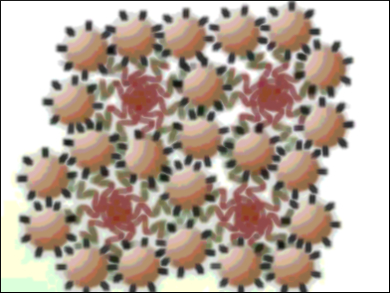Metal oxide catalysts with improved performance can be prepared by constructing mesoporous networks of colloidal nanoparticles (NPs). Such materials can show distinctive functional properties, owing to the high reactivity of the framework’s constituents and to the large exposed surface area of the mesoscale pore structure.
Gerasimos Armatas, University of Crete, Greece, and colleagues have reported the synthesis of a new mesoporous network of crosslinked Mn3O4 NPs by polymer-assisted aggregating assembly. Compared to other morphologies, such as bulk microparticles, individual NPs, and random NP aggregates, these mesoporous Mn3O4 assemblies should provide more exposed active sites and a greater internal surface area, leading to improved catalytic performance.
Indeed, the Mn3O4 NP networks, which aggregated in an ethanol solution of poly(ethylene oxide)-b-poly(propylene oxide)-b-poly(ethylene oxide), show excellent activity for the catalytic oxidation of various aromatic and cyclic alkenes, as well as aryl alkanes, with tert-butyl hydroperoxide (TBHP). Overall, these findings suggest that this Mn3O4–TBHP catalytic system represents a promising approach towards the large-scale production of carbonyl compounds from styrenes or aromatic hydrocarbons in high yields and with high selectivity.
- Mesoporous Assembled Mn3O4 Nanoparticle Networks as Efficient Catalysts for Selective Oxidation of Alkenes and Aryl Alkanes,
Euaggelia Skliri, Stelios Papadogiorgakis, Ioannis N. Lykakis, Gerasimos S. Armatas,
ChemPlusChem 2016.
DOI: 10.1002/cplu.201600460This article will be part of a special issue of ChemPlusChem on the occasion of the journal’s Fifth Anniversary.




